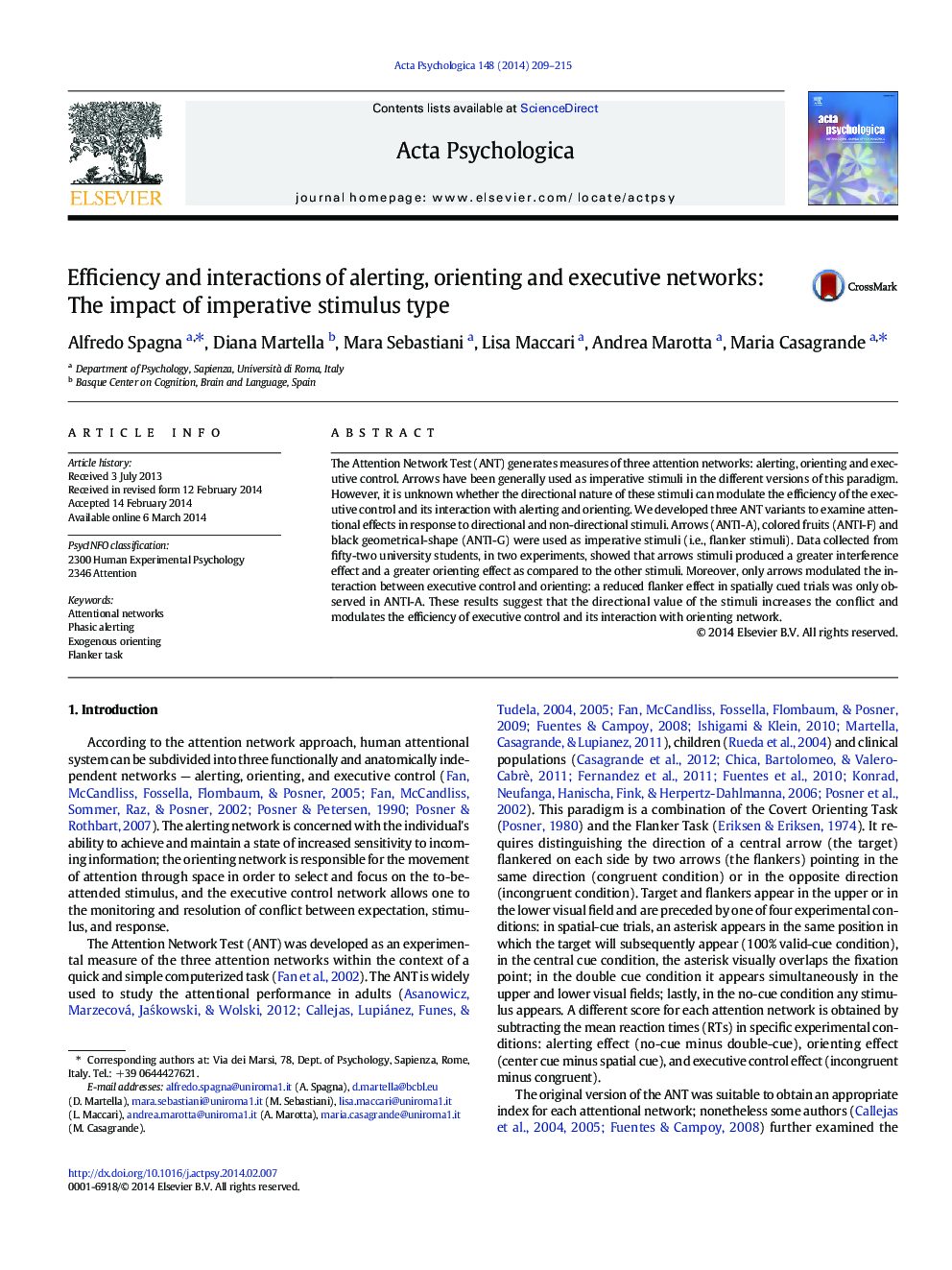| Article ID | Journal | Published Year | Pages | File Type |
|---|---|---|---|---|
| 7277849 | Acta Psychologica | 2014 | 7 Pages |
Abstract
The Attention Network Test (ANT) generates measures of three attention networks: alerting, orienting and executive control. Arrows have been generally used as imperative stimuli in the different versions of this paradigm. However, it is unknown whether the directional nature of these stimuli can modulate the efficiency of the executive control and its interaction with alerting and orienting. We developed three ANT variants to examine attentional effects in response to directional and non-directional stimuli. Arrows (ANTI-A), colored fruits (ANTI-F) and black geometrical-shape (ANTI-G) were used as imperative stimuli (i.e., flanker stimuli). Data collected from fifty-two university students, in two experiments, showed that arrows stimuli produced a greater interference effect and a greater orienting effect as compared to the other stimuli. Moreover, only arrows modulated the interaction between executive control and orienting: a reduced flanker effect in spatially cued trials was only observed in ANTI-A. These results suggest that the directional value of the stimuli increases the conflict and modulates the efficiency of executive control and its interaction with orienting network.
Keywords
Related Topics
Life Sciences
Neuroscience
Cognitive Neuroscience
Authors
Alfredo Spagna, Diana Martella, Mara Sebastiani, Lisa Maccari, Andrea Marotta, Maria Casagrande,
